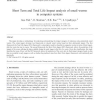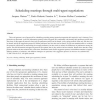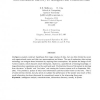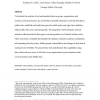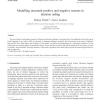102
Voted
DSS
2007
15 years 12 days ago
2007
This paper develops a methodology for analyzing and predicting the impact category of malicious code, particularly email worms. The current paper develops two frameworks to classi...
91
Voted
DSS
2007
15 years 12 days ago
2007
We have empirically compared two classes of technologies capable of locating potentially malevolent online content: 1) popular keyword searching, currently widely used by law enfo...
93
Voted
DSS
2007
15 years 12 days ago
2007
In this paper, we report results of an investigation into the factors influencing the selection of sponsored links by e-commerce Web searchers. In this research, 56 participants e...
79
Voted
DSS
2007
15 years 12 days ago
2007
This work presents a set of protocols for scheduling a meeting among agents that represent their respective user's interests. Four protocols are discussed: a) the full inform...
91
Voted
DSS
2007
15 years 12 days ago
2007
Intelligence analysts construct hypotheses from large volumes of data, but are often limited by social and organizational norms and their own preconceptions and biases. The use of...
79
Voted
DSS
2007
15 years 12 days ago
2007
117
Voted
DSS
2007
15 years 12 days ago
2007
The context concept can be used with advantage in the area of Computer-Supported Cooperative Work. In many studies, several forms of context have been used without explicit associ...
105
Voted
DSS
2007
15 years 12 days ago
2007
To facilitate the analysis of real and simulated data on groups, organizations and societies, tools and measures are needed that can handle relational or network data that is mult...
85
Voted
DSS
2007
15 years 12 days ago
2007
The use of positive and negative reasons in inference and decision aiding is a recurrent issue of investigation as far as the type of formal language to use within a DSS is concer...
103
Voted
DSS
2007
15 years 12 days ago
2007
: As supply chains become more dynamic it is important to be able to model them formally as business processes. In particular, there is a need for a sense and respond capability to...
